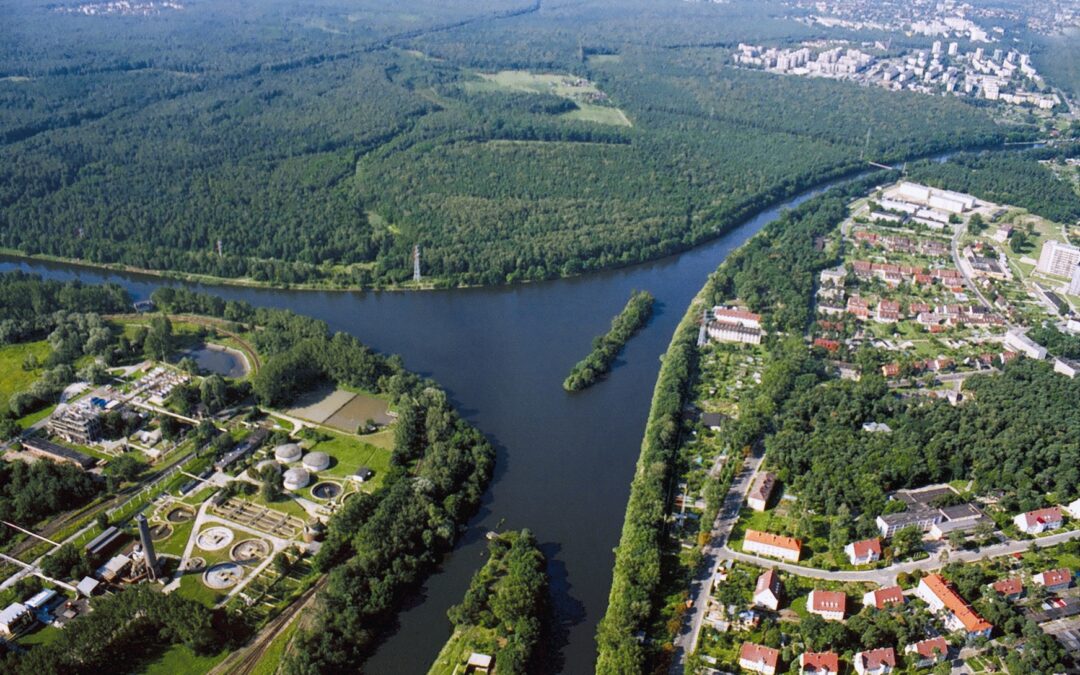Almost half a tonne of dead fish have been discovered in the Gliwice Canal, the climate ministry has announced. The waterway, which runs through some of Poland’s most heavily industrialised areas, was the likely source of last year’s environmental catastrophe that saw 360 tonnes of dead fish wash up in the Oder river.
However, the climate and environment minister Anna Moskwa has emphasised that recent testing has shown no signs of the algae that were linked to last year’s crisis.
“On 10 June, over 450 kg of dead fish were collected in the Gliwice Canal,” announced the ministry on Saturday. “The probable cause is a sharp decrease in the oxygen level in the water. In some places, it fell to 45%.”
W Kanale Gliwickim stwierdzono śnięcie 450 kg ryb. Wstępne analizy wskazują na gwałtowny spadek tlenu, miejscami do 45%. Badania @PL_GIOS (7. 06) w ramach monitoringu interwencyjnego, nie wskazują na obecność złotej algi i wytwarzanych przez nią toksyn. https://t.co/PwiVdae4X6
— Ministerstwo Klimatu i Środowiska (@MKiS_GOV_PL) June 10, 2023
Yesterday, the provincial authorities ordered emergency action to oxygenate parts of the canal where the lowest levels were found. Further testing of water and fish samples is also underway, but the authorities have announced that they have not found the presence of golden algae, which were the main cause of last year’s catastrophe.
That contradicts claims by local anglers, who said that the dead fish showed signs of having been killed by toxins from algae, reports broadcaster TOK FM.
“Everything indicates that these animals died as a result of algae toxins – destroyed gills and petechiae [spots on the skin] are characteristic symptoms,” Bogdan Wziątek, a biologist specialising in fisheries who is head of the Polish Angling Association’s scientific council, told TOK FM.
Such claims were questioned by Moskwa this morning. She told broadcaster Radio Zet that “suffocation [happens] when oxygen is low, algae when oxygen is high…On 7 June we did not find any golden algae in the entire Gliwice Canal. [But] we are once again examining all sections [of the canal] and also the fish”.
⚠️Katastrofa odrzańska dzieje się właśnie teraz. Z Kanału #Gliwickiego wędkarze wyłowili prawie 500kg martwych ryb. @Radio_TOK_FM
Maja ślady działania złotej algi.
System ostrzegania, monitoring #odra zdaję się niewiele warte.@MKiS_GOV_PL @moskwa_anna @WodyPolskie @PL_GIOS pic.twitter.com/BnekK86K8O
— Szymon Kępka (@SzKepka) June 10, 2023
Last summer, the first sightings of dead fish were reported near the junction of the Oder and the Gliwice Canal in mid-July. That was followed by mass die-offs of fish along the length of the river in the following weeks.
An EU report later found that the canal was the “most likely…source of anthropogenic emissions of effluents with elevated salt loads” that contributed to the disaster.”
Speaking to Radio Zet today, Moskwa assured that the authorities have “done everything we could to prevent a repeat of last year’s catastrophe”, though she admitted that dealing with “discharges from sewage treatment plants is still a challenge”.
An EU report on the ecological disaster that killed 360 tonnes of fish in the Oder river last year has found:
– industrial waste was a key factor
– poor communication hampered responses
– the incident should be a "wake-up call" for better river management https://t.co/TohdbNlLnS— Notes from Poland 🇵🇱 (@notesfrompoland) February 27, 2023
Main image credit: Jaroslav Kubec/Wikimedia Commons (under CC BY-SA 3.0)

Daniel Tilles is editor-in-chief of Notes from Poland. He has written on Polish affairs for a wide range of publications, including Foreign Policy, POLITICO Europe, EUobserver and Dziennik Gazeta Prawna.




















